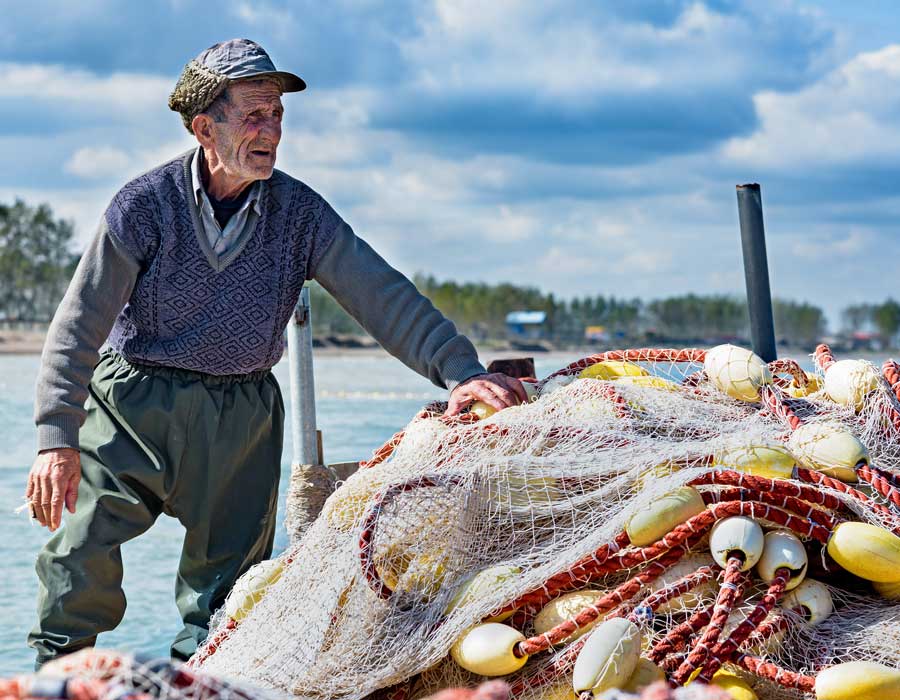STEP 2
Set Long-term Goals
In this step:
- Identify the benefits people value from the fishery system
- Develop long-term goals to guide climate-resilience planning

Fisher in Middle East. Photo: © Sasan Rashtipour/Unsplash
Background
To loosely paraphrase the philosopher Thomas Carlyle, a fishery climate-resilience planning effort without goals is like a ship without a rudder. After setting the stage for the planning effort in Step 1 by defining the system bounds, Step 2 helps to bound where the planning effort should go. Goals defined in Step 2 are the rudder that helps direct the planning and implementation of climate-resilience actions.
In this step, the groundwork is put in place for Steps 3 through 6 by helping to clarify what people value about the fishery and what they want the fishery to be like in the future. In collaborative planning efforts that involve people with diverse perspectives, collectively defining goals is especially important to ensure that discussions and decisions reflect everyone’s values and visions. With the context defined in Step 1, Step 2 focuses on the determination of what is valued and important in the fishery system. Consider not just economic values that can be quantified monetarily, but also less tangible values such as ecological, social and spiritual benefits. The worksheet in Step 2 provides a place to brainstorm and prioritize fishery goals. The S.M.A.R.T. Goals framework can be used to further develop goals that are specific, measurable, assignable, realistic, and time-related.
Climate change can pose direct or indirect impediments to achieving these goals. For example, increasing storm severity may damage habitats that support fish populations, and ocean warming may cause local declines in a valuable fish species, which may lead to supply chain disruptions that negatively affect the fishing community. In this context, building climate resilience can help achieve both social and ecological goals.

Iceland fishing vessel. Photo: © Julia Mason
Case Study Example
Iceland Groundfish Fisheries
Goal setting across entities and domains can prove challenging, but the benefits of participatory engagement remain high. In Iceland’s commercial fisheries, management is tightly controlled by the Individual Transferable Quota (ITQ) system, under which all commercial fishing requires a permit, no foreign vessels may own quota, and all landings are strictly monitored.
The highly developed management of this fishery in addition to its peoples’ willingness to adapt, has enhanced focus on fishery resilience goal setting. The ITQ’s alignment around both ecological and economic goals has fostered greater levels of trust between industry and management, which can ease the process of setting and achieving goals. However, many smaller communities are often left out of the decision making process.
Without greater attention to social equity, the ITQ system runs long term risks of reactionary political destabilization detracting from its productive ecological and economic goals. Exploring how to build resilience to climate change and encouraging more collaborative goal-setting may support greater equity, distribution of benefits, and foster the ongoing role of fish and fishing in Icelandic society.
External Links to Related Tools
S.M.A.R.T. Goals: Guidance for how to develop goals
Tasks for Workbook
In the downloadable CRF Planning Tool workbook, complete these tasks on the Step 2 worksheet.
- Brainstorm goals
- Identify main goals
CRF Planning Tool Steps